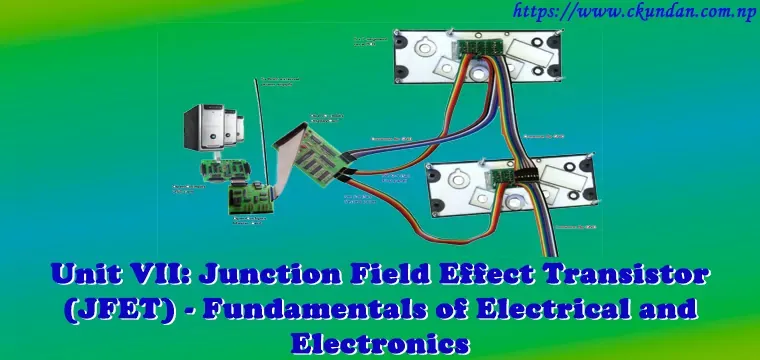A bipolar junction transistor is made up of two PN-junctions in the primary current carrying route between the Emitter and Collector terminals, as we saw before. Instead of PN-junctions, the Junction Field Effect Transistor (JUGFET or JFET) has a narrow piece of high resistivity semiconductor material forming a “Channel” of either N-type or P-type silicon for the majority carriers to flow through, with two ohmic electrical connections at either end commonly referred to as the Drain and Source respectively.
The N-channel JFET and the P-channel JFET are the two fundamental types of junction field effect transistors. The channel of an N-channel JFET is doped with donor impurities, resulting in a negative (hence the name N-channel) current flow in the form of electrons.
In this “Junction Field Effect Transistor (JFET) – Fundamentals of Electrical and Electronics” you will learn about the following topics:
- Construction
- Types and Principle of Operation
- JFET Quadratic Characteristics
- Biasing and Load Line
This article Junction Field Effect Transistor (JFET) – Fundamentals of Electrical and Electronics is contributed by Ritesh Thapa, a student of LA GRANDEE International College (LGIC).
==== Point to Note ====
This article Junction Field Effect Transistor (JFET) – Fundamentals of Electrical and Electronics is contributed by Kabita Adhikari, a student of LA GRANDEE International College (LGIC).
If you like to contribute, you can mail us BCA Notes, BCA Question Collections, BCA Related Information, and Latest Technology Information at [email protected].
See your article appearing on BCA Notes (Pokhara University) main page with your designation and help other BCA Students to excel.
Please write comments if you find anything incorrect, or you want to share more information about the topic discussed above.







![BCA 1st Semester Question Papers Pdf [Updated]](https://blogger.googleusercontent.com/img/b/R29vZ2xl/AVvXsEgLAEigAxHSrlcaODdgkV0lKVobAcEHQq7xn1ca8t7uB7DBu5PQtNL2hkGYuHFDley4guAYwc8qUJ5gX79ejw9gT4SpnpeTd0lWIkF31OobOMaShc4_wi7rZTB00RGosV1d-HtKJ0QoClENdw1Xqe5B_ji8fuxwS5thSXCqAKLGBI-GvMCCCzsvtt-EaxA/w72-h72-p-k-no-nu/bca-1st-semester-old-question-pu.jpg)
0 Comments